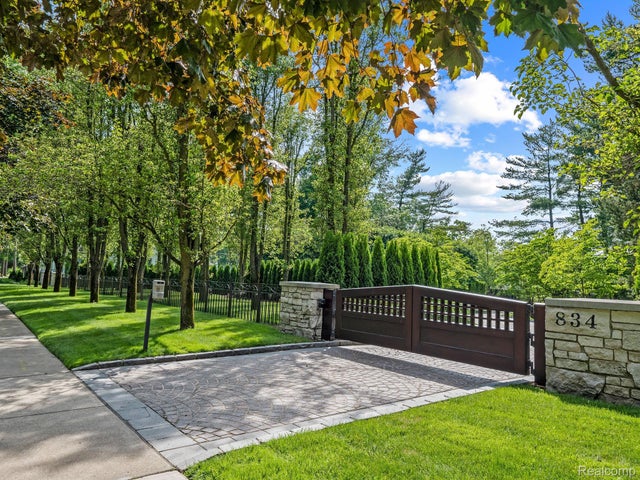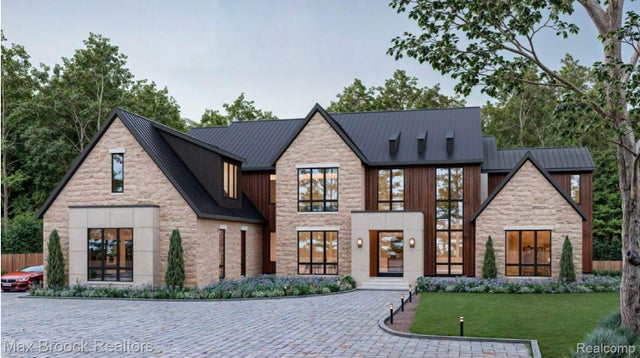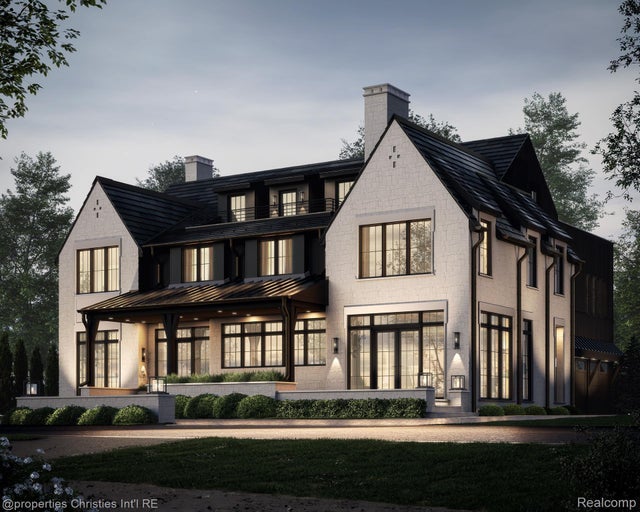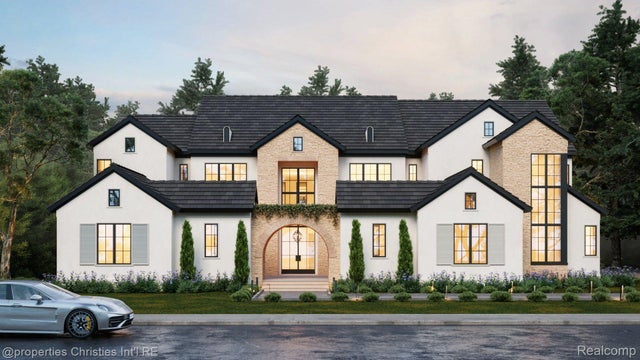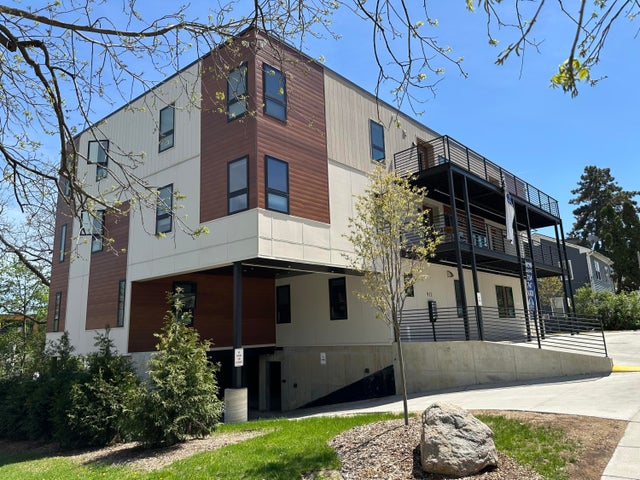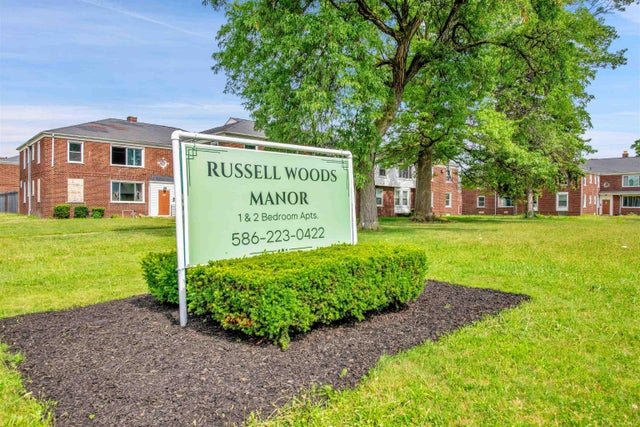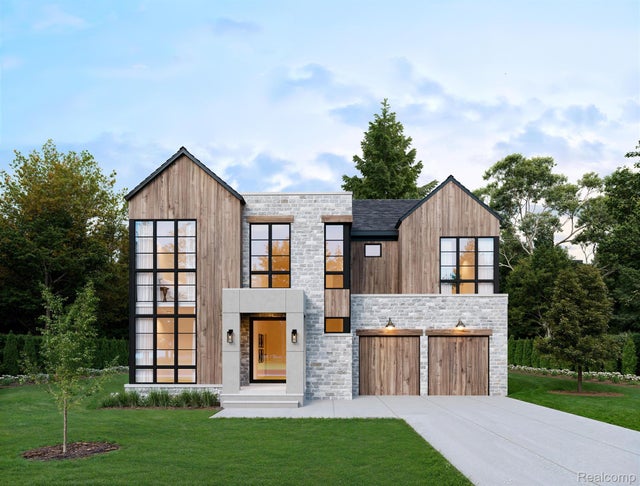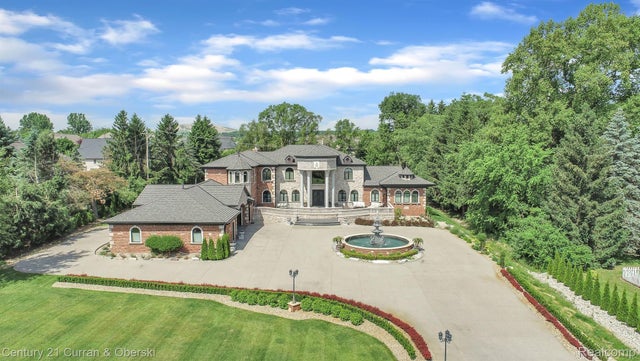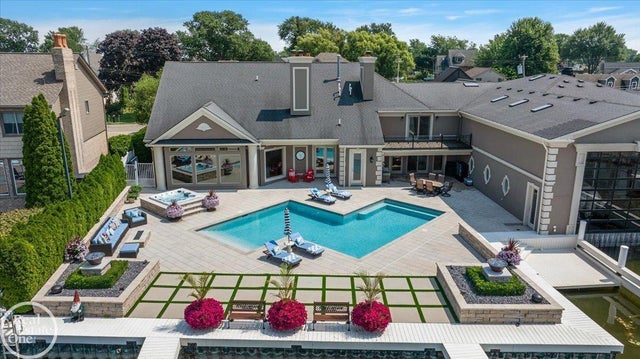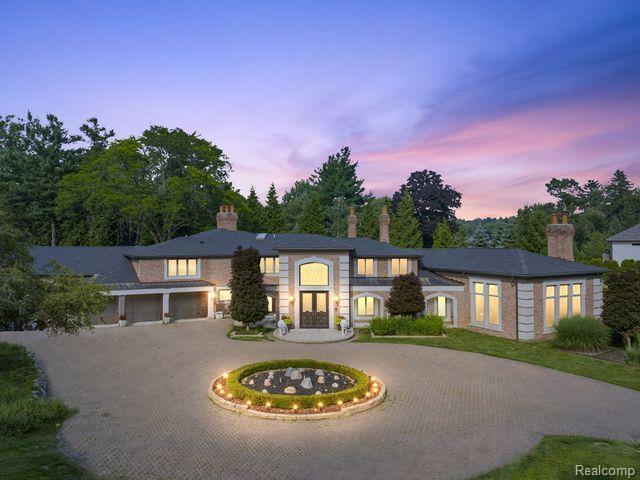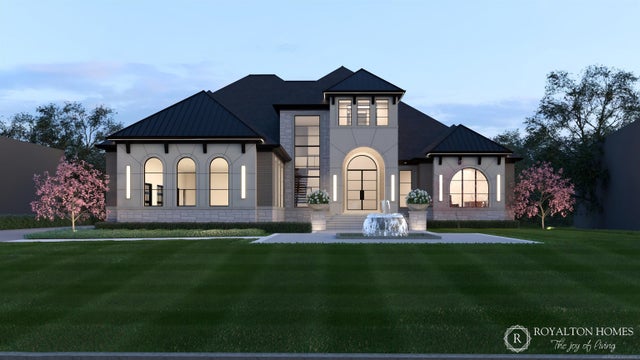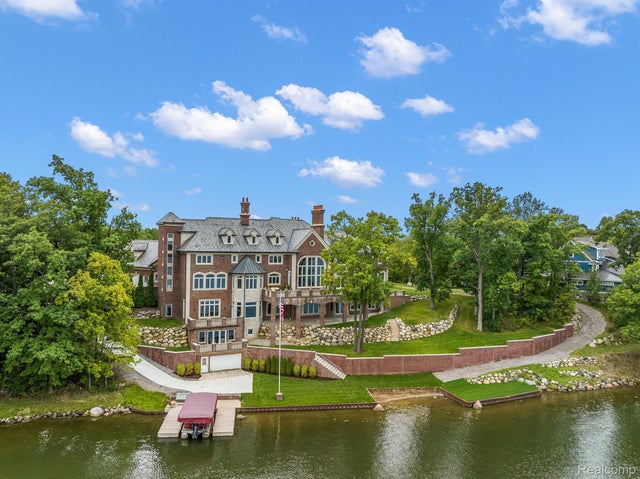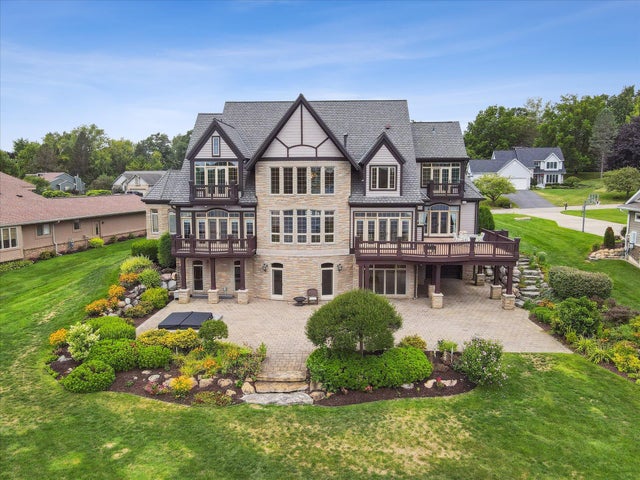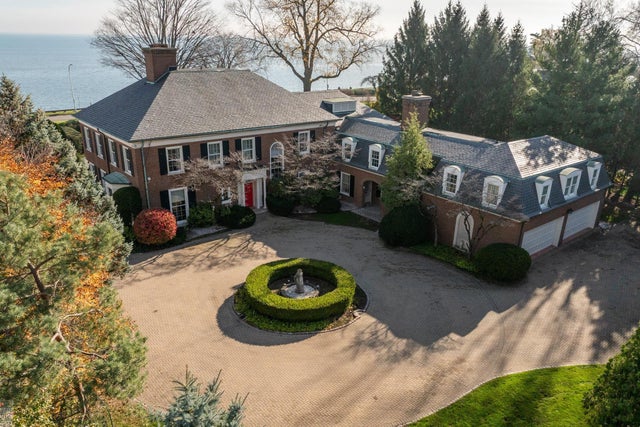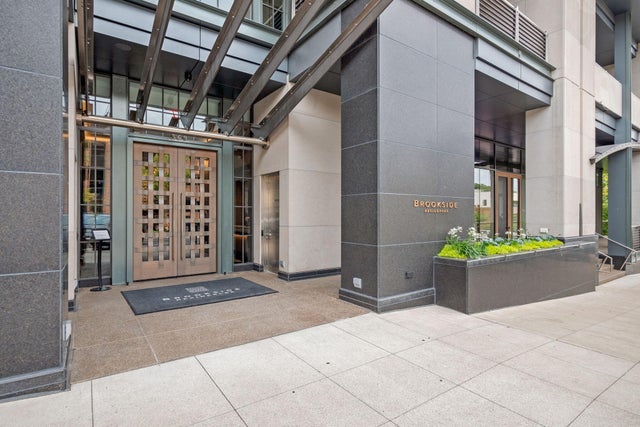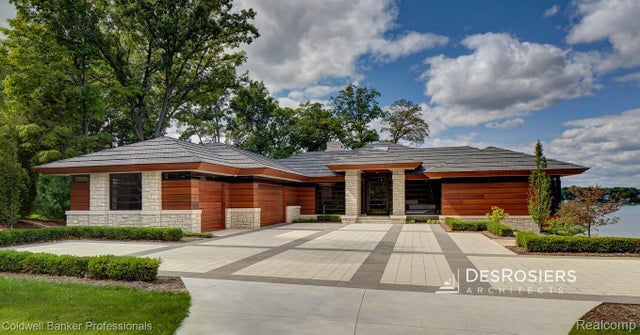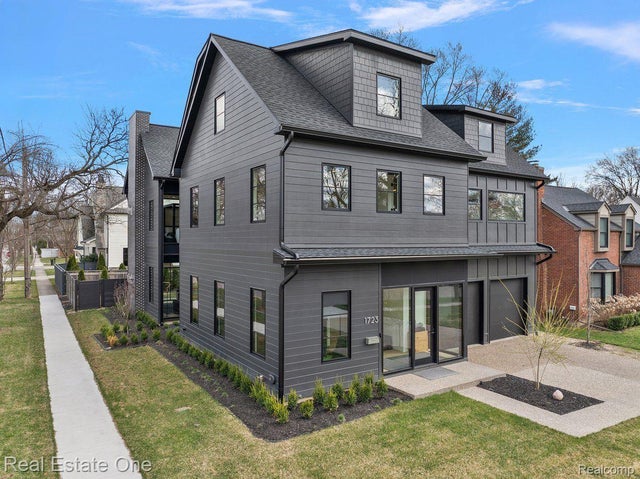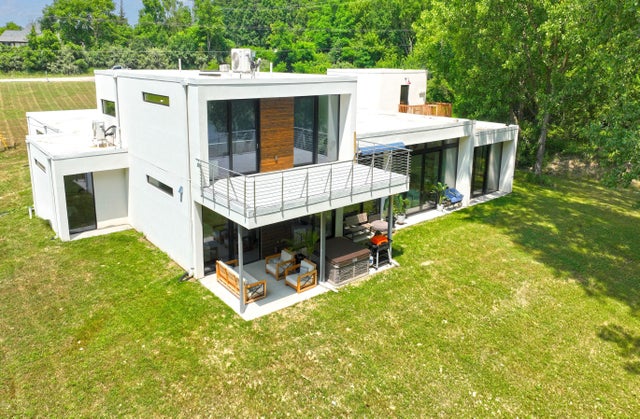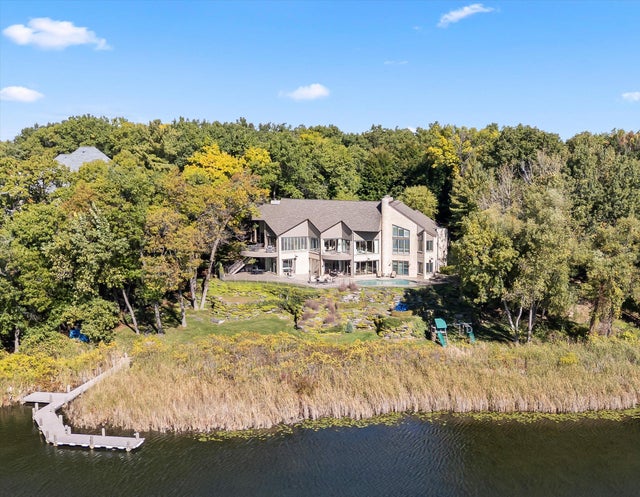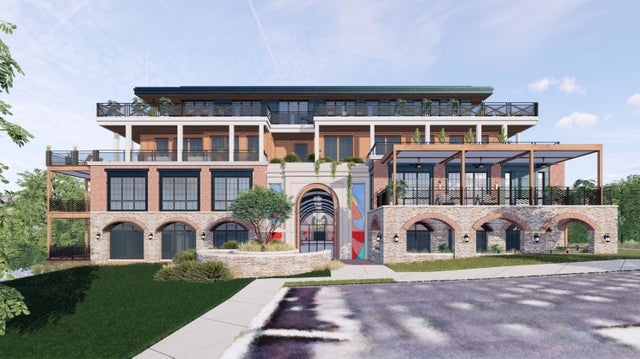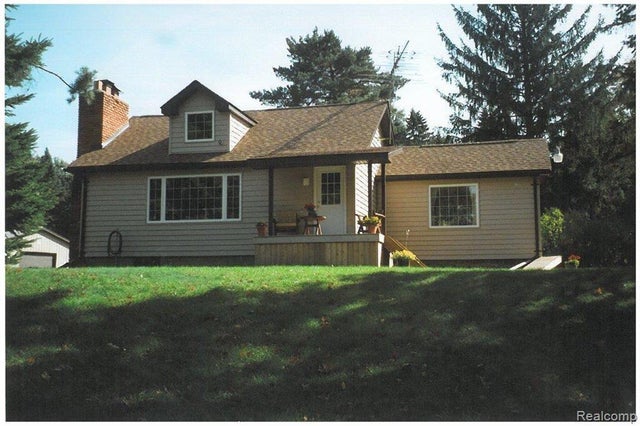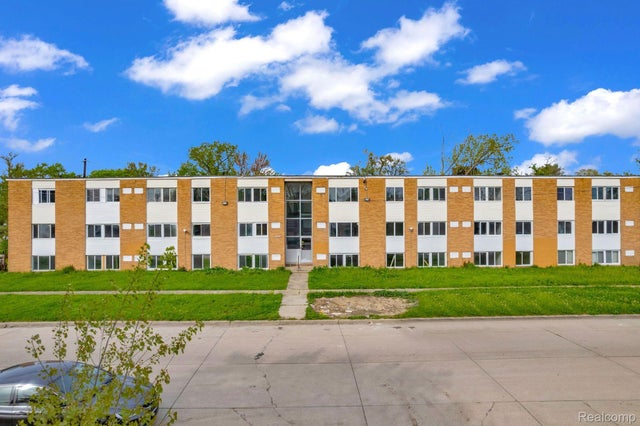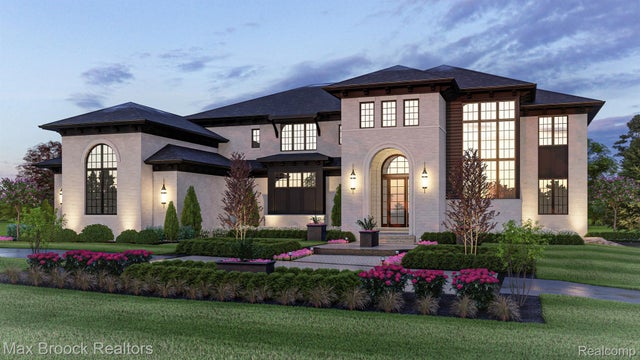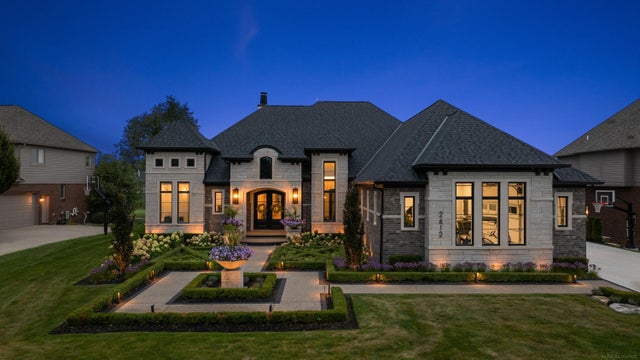Could an $800 million plan to boost housing be the answer to Metro Detroit’s affordable housing woes? A growing coalition of Michigan cities and lawmakers think it’s a big step in the right direction. Faced with a shortage of homes and rising costs, they’re backing a proposal to invest $160 million per year for five years to spur new construction and rehab old properties. Officials estimate this could create 10,000 new or revitalized homes over five years, about 2,000 units a year, helping ease the crunch for families across the state. It’s an ambitious, locally driven approach designed to tackle Michigan’s housing crisis without heavy-handed mandates. Instead, the plan would use incentives and partnerships to encourage communities to loosen zoning rules and developers to build more affordable homes. The question on many minds: How might this play out in Metro Detroit’s neighborhoods?
In the voice of a lifelong Michigander and seasoned Detroit-area real estate expert, this article breaks down the proposed “MI Home” housing incentive program and explores its potential impact locally. We’ll look at why Michigan needs more housing, what the $800 million would fund, and how your community, whether you’re a homebuyer in Macomb County, a renter in Detroit, or a builder in Oakland County, could feel the effects. Let’s dive into the details of this plan, and see how it might help Metro Detroiters find homes that are both affordable and attainable, all while keeping that neighborly, Michigan charm intact.

Michigan’s Housing Crunch Hits Home
Michigan’s affordable housing crisis isn’t just a buzzword, it’s a daily reality for many Metro Detroit families. In recent years, housing supply hasn’t kept up with demand, leading to fierce competition for available homes. State officials estimate Michigan was short about 119,000 housing units as of spring 2025. To put that in perspective, from 2014 to 2023, Michigan added new homes at a snail’s pace, roughly one new home built for every 14 new households forming during that period. The result? Rents and home prices shot up, and vacancies dwindled. In Metro Detroit, we’ve seen double-digit jumps in home prices during the pandemic era, and “For Sale” signs often spark bidding wars among eager buyers. Renters, too, have felt the squeeze. Michigan had the second-highest rent increases in the nation at one point, and more than half of renters are paying over 30% of their income on housing.
This housing crunch hits all corners of the state, but it’s especially acute in thriving areas like Metro Detroit. Even though Detroit’s population is smaller than decades past, quality housing in safe, well-located neighborhoods is in short supply. Suburban communities from Ferndale to Farmington Hills have waiting lists for affordable apartments and starter homes. Young families struggle to buy their first house in communities where prices have outpaced incomes. Meanwhile, companies worry that a lack of housing options makes it harder to attract talent, after all, if a new engineer or teacher can’t find a place to live near their job, they might think twice about relocating to Michigan.
Local leaders and housing experts agree: addressing this shortage is key to keeping our region vibrant and retaining the people (and jobs) that make Michigan special. Governor Gretchen Whitmer has summed up the urgency with a blunt rallying cry, “the rent is too damn high, and we don’t have enough damn housing… our response will be simple: build, baby, build!”. Building more homes is easier said than done, of course. It requires money, political will, and updated rules so new housing can actually get built where people need it. That’s where the new $800 million housing incentive proposal, known as the MI Home Program, comes into play. It aims to put real dollars on the table to jump-start construction and rehabilitation of homes, while nudging communities to modernize old zoning rules that have limited housing growth.
For up-to-date local pricing context, see our deep dive on where Metro Detroit home values are heading
An Overview of the $800 Million MI Home Program
The Michigan Municipal League (MML), which represents cities and towns statewide, is spearheading the MI Home Program proposal. Backed by a bipartisan group of lawmakers from urban and rural areas alike, the plan calls for dedicating $160 million in state funds each year for five years (totaling $800 million) to tackle housing needs. Importantly, this isn’t just free money being handed out, communities have to earn it by adopting housing-friendly policies, and developers have to use it to create attainable homes for moderate-income residents. Here’s a glance at the major components of the plan:
- MI Home Grant: The largest piece, with about $95 million in funding for each of the first two years, rising to $145 million per year in later years, aimed at filling financial gaps in housing projects. These grants could provide up to $100,000 per new housing unit constructed or up to $30,000 per home rehabilitated, covering as much as 30% of development costs. This is crucial for making projects viable when the math otherwise wouldn’t work, for example, building a new home in Detroit’s neighborhoods can cost more than its eventual sale price, so a grant can bridge that gap and incentivize builders to go ahead.
- MI Home Fund: A $50 million revolving loan fund (initially for two years) to provide low-interest loans that can be layered with the grants. This adds another financing tool to cover development costs. By revolving, it means as loans are repaid, the money becomes available to fund new projects, creating a sustainable cycle of investment in housing.
- MI Home Readiness: $5 million per year set aside for “housing readiness” incentives. Essentially, this pot rewards local governments that take steps to modernize their zoning and land-use policies to allow more housing. A city or township can get grants (up to $50,000 per project) for planning updates that make development easier, think of things like rewriting ordinances to allow duplexes in single-family zones, or reducing overly strict parking requirements. This program even includes a statewide matchmaking platform to connect municipalities with developers. It’s the state’s way of saying: “If you’re willing to open the door for housing, we’ll help cover the costs of getting ready.”
- MI Home Employer: $10 million annually dedicated to employer-assisted housing efforts. This continues an idea already underway in Michigan: encouraging employers to chip in and help create housing for their workers. If a major employer (say a hospital system, manufacturer, or university) invests in a housing project to ensure employees have nearby places to live, the state would match a portion of that investment. The goal is to leverage public-private partnerships, companies have a stake in solving housing shortages too, especially in high-need areas. In fact, earlier this year the state launched an Employer Housing Fund that’s already backing a handful of projects for hundreds of income-eligible households.
Affordability Focus: All housing built or rehabbed with these programs must be targeted to moderate-income residents. Specifically, homes (whether for sale or rent) must be priced to be affordable for households earning no more than 120% of the area median income (AMI). In plain language, that means middle-class families, for example, working folks like teachers, nurses, electricians, or police officers in Metro Detroit, are the intended beneficiaries. A homebuyer earning around that 120% AMI threshold should be able to afford the mortgage, or a renter should be able to pay the rent without it exceeding roughly 30% of their income. These affordability conditions have to last at least 10 years for each property. So, developers can’t take the money, build, and then immediately flip the unit at luxury prices – it’s designed to actually boost the stock of attainable housing for the next decade and hopefully beyond.
It’s worth noting that MI Home is modeled on a successful program in Ohio and even parallels some ideas in a bipartisan housing bill in the U.S. Senate. In other words, Michigan isn’t acting in a vacuum, other states are also experimenting with this blend of incentives for construction + zoning reforms to address housing woes. However, Michigan’s twist is unique in how it deliberately ties state funding to local zoning changes in a cooperative way, rather than imposing one-size-fits-all rules from Lansing.
.png)
Partnership Over Preemption: Incentivizing Local Zoning Reform
One of the most interesting aspects of the $800M housing proposal is how it tries to marry money with local control. Michigan has long been a state where local zoning laws are king, each city or township sets its own rules about what can be built where. In Metro Detroit, this has often meant strict single-family zoning, big lot size requirements, and other regulations that limit housing density. (In fact, research shows Metro Detroit historically has some of the nation’s most restrictive zoning laws, which helps explain why it’s tough to add duplexes, apartments, or even granny flats in many suburbs.) Efforts to override local zoning from the state level typically face fierce resistance. Last year, for example, a set of state bills aimed at forcing communities to allow things like duplexes and accessory dwelling units (ADUs) met pushback from local governments and didn’t become law.
Learning from that, the MI Home Program takes a “carrot not stick” approach. Rather than mandating changes, it offers incentives for communities that voluntarily modernize their zoning. Dan Gilmartin, CEO of the Michigan Municipal League, described it as achieving housing goals “through partnerships and not preemption”. In practical terms, any city or township that wants its local developers to tap into the MI Home Fund or Grants will first need to adopt at least half of a menu of recommended housing policy reforms. Adopt half, and you become an “approved” community where developers can use these state dollars.
What kind of zoning or policy reforms are we talking about? The Municipal League has identified 14 best practices for local governments to consider. Here are a few examples that hit close to home:
- Allowing duplexes and triplexes in residential areas: Instead of reserving all neighborhood land only for single-family houses, let property owners build duplexes (two-unit homes) or even triplexes by right. This gentle increase in density can create more housing without altering neighborhood character drastically, imagine a spacious old house in Royal Oak being converted into an up-and-down duplex for two families, or a new side-by-side duplex fitting into a block in Warren or Livonia. Some Michigan cities are already moving this way. For instance, Ferndale (a progressive inner-ring suburb just north of Detroit) recently moved to eliminate single-family-only zoning, allowing duplexes and ADUs citywide after a narrow 3-2 City Council vote. The debate was heated, but the message was clear: Ferndale wants to open its doors to more housing options. That kind of step would directly check a box on the MI Home “readiness” list and qualify the city for funds. “Missing middle” housing like duplexes can blend into neighborhoods while offering more affordable choices, something many Metro Detroit suburbs could benefit from.
- Allowing accessory dwelling units (ADUs): ADUs are the small backyard cottages or in-law apartments that homeowners can add on their property. Think of a detached garage turned into a studio apartment, or a finished basement with a separate entrance. Detroit and several suburbs have begun warming up to ADUs as a way to increase housing subtly. Detroit’s current zoning code, for example, allows ADUs in certain neighborhoods under specific conditions, and Ferndale’s new draft ordinance explicitly permits ADUs on single-family lots as well. If more cities allow ADUs by right (meaning you don’t need a special variance to build one), it could create opportunities for homeowners to house an elderly parent, a young adult child, or just gain rental income while contributing an extra rental unit to the community. The MI Home incentives would encourage this by rewarding communities that legalize ADUs.
- Reducing parking requirements: Many Metro Detroit communities still have ordinances requiring 2 or more parking spaces per housing unit, even for a small apartment. Those black-and-white “2.0 parking spaces per dwelling” rules can add cost and consume land, effectively limiting how many units can be built. Lansing’s Mayor Andy Schor noted his city already cut parking minimums and switched to more flexible “form-based” codes, a move that other cities like Ann Arbor and Traverse City have also embraced in recent years. For Metro Detroit, lowering parking requirements to, say, 1 or 1.5 spaces per unit (or eliminating them near transit corridors) could make a big difference in downtown and corridor developments. Imagine new lofts along Woodward in Ferndale or Detroit’s New Center with less mandated parking, developers could save money on parking structures and potentially price units lower as a result. Under MI Home, cities that relax parking rules (for example, to 1.5 spaces or less per dwelling) would meet one of the incentive criteria.
- Allowing smaller lot sizes or higher density near transit: Some of the best practices include enabling multifamily or mixed-use development in areas that make sense, like near future transit lines, downtown centers, or along commercial corridors. Metro Detroit is slowly expanding transit and walkable development (the QLine streetcar, the proposed regional transit plans, etc.), and having zoning that supports apartments or condos in these areas is key. Communities that pro-actively zone for higher density around, say, a busy corridor in Oak Park or near a job hub in Novi could qualify for readiness grants and then attract projects using MI Home funding.
These changes may sound technical, but they boil down to letting people build the kind of housing that modern households need – from starter homes to granny flats to townhouses, rather than only 2,500 sq. ft. single-family houses with two-car garages. By meeting at least half of the recommended reforms, a community shows it’s serious about being a part of the housing solution. And in return, the state would funnel dollars to that community’s projects. It’s a trade-off approach that many local leaders prefer over being forced into uniform state rules. “While we have been making progress, we have seen efforts to preempt our local zoning…and we don’t believe that approach is appropriate nor will it lead to more attainable housing,” said Don Gerrie, the MML President and mayor of Sault Ste. Marie. With MI Home, instead of preemption, the state basically says: “Show us you’re making some changes, and we’ll help fund housing in your town.”
Early signs suggest communities are willing to step up. Lansing did it on its own, Ferndale is in the process, and other places like Saginaw, Grand Rapids, and Traverse City are actively discussing zoning reform to allow more housing types. Even some traditionally exclusive suburbs are feeling pressure, Rochester Hills, for example, is represented by Rep. Mark Tisdel (R-Rochester Hills) who is a co-sponsor of this proposal. His support signals that fast-growing Oakland County communities see value in voluntary changes over state mandates.
Finally, it’s important to mention that some policy analysts, such as those at the free-market Mackinac Center, argue that Michigan should go further and enact statewide zoning reforms to override local barriers. They contend that simply subsidizing developers (they note the cost could be about $140k per unit if you divide $1.4 billion by 10,000 units) won’t fully solve the problem. Instead, they advocate eliminating restrictive codes entirely so builders can build freely. The MI Home plan doesn’t go that far, it’s a more politically palatable compromise that respects local control. Whether that balance is enough to spur the housing boom Michigan needs remains to be seen, but it’s a significant experiment in aligning local and state efforts.
How Could Metro Detroit Neighborhoods Benefit?
What would this all mean on the ground, especially in the diverse communities of Metro Detroit? Let’s paint a picture of potential impacts for different groups, homebuyers, renters, and real estate professionals, and give some local examples:
For Homebuyers and Renters: More Options in More Places
If you’re a family or individual searching for a home in Metro Detroit, the MI Home initiative could expand the menu of housing options in the coming years. Here are a few ways you might see it play out:
- New homes in revitalizing Detroit neighborhoods: Detroit has thousands of vacant lots and many aging houses in need of repair. However, building a brand-new home in the city often isn’t financially feasible without subsidies, construction costs might run $200,000 while the completed home might only appraise for $150,000 in certain neighborhoods, creating a $50k gap. The MI Home Grant (up to $100k per new build) directly addresses that “appraisal gap.” Suppose a local Detroit developer wants to infill a few empty lots on a block in Banglatown or Southwest Detroit with modest 3-bedroom houses. With a $100k grant per home, they could cover that gap and sell the homes at an affordable price to moderate-income buyers (e.g. under $200,000), instead of scrapping the project. This means more first-time homebuyer opportunities in the city. Likewise, for rehabbing Detroit’s beautiful but dilapidated older homes, a $30k rehab grant could help fix the roof, plumbing, and heating in a long-abandoned house in Grandmont Rosedale or East English Village, turning an eyesore into a quality home for a family. Over time, you could see entire blocks in these neighborhoods come back to life as rehabbed affordable homes, each guaranteed to remain attainable for at least 10 years due to the program’s rules.
- Greater housing choice in inner-ring suburbs: Close-in suburbs like Ferndale, Eastpointe, Oak Park, or Hazel Park are popular for their relatively affordable housing and urban proximity. But demand has far outstripped supply in recent years, just ask any renter trying to find an apartment in Ferndale’s limited stock, or any couple bidding on a house in Oak Park. If these communities tap into MI Home, you might start seeing more “missing middle” housing pop up. For example, Oak Park could update zoning to allow small townhouse rows or fourplexes on a main street. A developer could then get a grant to build a 4-unit townhouse project that sells each unit at, say, $220,000 – a price within reach for a middle-income buyer, instead of needing to charge $300k+ to recoup costs. In Eastpointe, a homeowner might add an ADU in the backyard for grandma or to rent to a young single, and the city, by allowing ADUs, would qualify so that perhaps a small-scale builder could get a loan from the MI Home Fund to construct a couple of ADUs as a pilot project. Renters would gain from an increased supply of accessory apartments and duplex rentals sprinkled through these neighborhoods, likely at price points lower than large new luxury complexes. More units overall means a bit less competition for each unit. As housing economists like to say, adding supply, even at moderate price points, has a downward pressure on prices over time, helping ease rent growth and calming home price spikes. So, while this program is not a silver bullet, if it truly yields 10,000 new units, that’s a significant influx that should benefit those looking for a place to live.
- Housing that fits different stages of life: A great part of diversifying housing is creating homes for all life stages, young singles, families with kids, empty nesters, multi-generational households. Metro Detroit’s housing stock is heavy on 3-bedroom postwar houses and large-lot homes, which don’t fit everyone’s needs today. MI Home incentives for duplexes, ADUs, condos, etc., could mean a young professional in Novi might finally find a newly built one-bedroom condo to buy instead of having to rent, or a retiree in St. Clair Shores could downsize into a cottage-style duplex in the same community. This plan specifically will fund a wide range of housing types, single-family homes, duplexes, townhouses, even modular homes and mixed-use developments. So, expect a more eclectic mix of housing in the future. The benefit for locals is having choices: rent or buy, new or rehabbed, urban or suburban, without being priced out completely.
If you’re buying your first home in Michigan, here’s how the new $25K assistance can help close the gap
.png)
For Metro Detroit Communities: Revitalization and Growth
From a neighborhood perspective, the influx of housing investment could be a catalyst for revitalization. Take Detroit’s Jefferson-Chalmers area, or perhaps Pontiac in Oakland County, both have plenty of vacant properties and need investment. If developers utilize MI Home funds there, you might see formerly blighted blocks turning into thriving streets of families once again. Property values for existing homeowners could stabilize or even rise as vacant homes get occupied and fixed up (though the program tries to keep new housing affordable, it often lifts the surrounding area’s appeal).
Communities that embrace the program also send a signal: “We are open for development.” This can attract further private investment beyond the program’s scope. For instance, if Taylor or Westland updates zoning and gets a few projects off the ground with grants, it may entice other builders to take a second look at those markets. As housing grows, so do related benefits: construction jobs, increased tax base, and more customers for local businesses.
One key aspect is that MI Home’s affordability period is 10 years. That means for a decade, those units help stabilize the community by preventing immediate resale or rent hikes to market-rate. After 10 years, the original buyers might build some equity and move up, or rentals might transition, but by then, ideally, the overall housing supply has expanded enough that the market is less strained.
For Real Estate Professionals and Developers: New Opportunities
In the Metro Detroit real estate world, this proposal has generated quite a buzz. Homebuilders and developers see it as a way to kickstart projects that were on the fence financially. Brian Farkas of Allen Edwin Homes (a major Michigan homebuilder) noted his company had already committed to increasing housing production by 30% even before this proposal. If MI Home funds become available, he expects building to ramp up even further. For builders, especially smaller local developers, having gap funding means they can take on projects in areas they might have deemed too risky before. We might see more local builders engaging in urban infill in Detroit or small-scale multifamily in the suburbs, rather than only focusing on high-end developments. It effectively lowers the risk and raises the reward for creating moderately priced housing.
Realtors and real estate agents in Metro Detroit could also feel a positive impact. In recent years, agents have struggled alongside buyers who simply can’t find enough homes on the market. More inventory, particularly at price points attainable to first-time buyers, means more transactions and happier clients. An agent working with a young family in Clinton Township might soon have a new subdivision of affordable homes to show them, built with an MI Home grant that kept prices $50k lower than they’d otherwise be. Or a Realtor in Detroit could help a client purchase a rehabbed home that was fixed up through this program, knowing that it meets certain quality standards and comes with an affordability covenant. Essentially, the program could inject life into segments of the market that have been stagnant, like new starter homes (a rarity in the last decade) or quality affordable rentals that are often hard to come by.
There’s also a community relations benefit for real estate professionals: being knowledgeable about these programs allows agents and lenders to guide clients to opportunities they might not have known about. For example, a real estate expert might advise a client, “Hey, the city of Livonia is participating in the MI Home Program, if you buy a house there and plan to renovate, there might be grants or loans to help with the costs.” In that way, local experts become a bridge connecting residents with the resources to make homeownership more accessible.
Finally, local employers stand to gain in an indirect but important way. Metro Detroit has some major employment centers, automotive plants, hospitals, universities, and many have workers who commute long distances due to housing costs or availability. If those employers partner in housing (using the MI Home Employer funds), they could develop, say, an apartment complex near a factory or a block of townhomes near a hospital, reserved for their workers at below-market rent. This improves employee satisfaction and recruitment. It’s already happening in some places: the state’s first round of Employer Housing grants (outside our region) funded nearly 479 units statewide. We could imagine in Metro Detroit something like Beaumont Health or Ford Motor Company leveraging this to help house their workforce close by. When workers live near their jobs, communities see reduced traffic congestion and families have more time at home, quality of life improvements that money can’t directly buy but good planning can encourage.
.png)
Challenges and Next Steps
Of course, a plan of this scale doesn’t become reality overnight. As of late summer 2025, the MI Home proposal was still under debate in Lansing, it had strong bipartisan support but was not yet locked into the state budget. Budget negotiations have been tumultuous, and lawmakers faced an Oct. 1 deadline to finalize funding without risking a government shutdown. The early signs were promising, with both Democrats and Republicans from different corners of Michigan championing the housing plan. “If this is the priority we claim it to be, then we have to invest in it,” MML’s Dan Gilmartin urged, noting the excitement around the broad coalition backing the effort.
One challenge is purely financial: finding $160 million per year for housing amid all the state’s other budget priorities (education, roads, public safety, etc.). Michigan had surplus revenues in recent years, but future economic conditions could tighten budgets. Legislators will have to agree on where this $800 million comes from – whether it’s the general fund, federal housing dollars, or other sources. Another challenge is legislative approval beyond the budget. Some aspects of the program might require new laws or tweaks to existing law (for example, setting up the revolving loan fund, or defining the enforcement of the 10-year affordability period). Municipal League officials have confirmed that creating these programs entails passing specific enabling legislation. This means even after budget approval, there could be more work to do in the Capitol to fully launch MI Home.
If and when the program is approved, the next hurdle will be implementation. Setting up the grant application processes, the criteria for communities to get “housing ready” approval, and oversight to ensure funds are used properly, all that will need swift but careful action. Michigan will likely lean on MSHDA (Michigan State Housing Development Authority) to administer many of these funds, since they already run housing programs. The good news is MSHDA has been ramping up capacity and has experience from deploying other housing funds (like a recent $100M housing initiative in 2024). In fact, the Housing Readiness Incentive Grant Program that pre-dated MI Home (with an initial $5M pot) was so popular that only $800k remained by mid-2024, indicating that cities are eager and ready to use such grants. That bodes well for rapid uptake of the new program.
For Metro Detroit specifically, a challenge will be ensuring that our local governments act quickly to qualify. Given the complexity of zoning overhauls, some cities may drag their feet or take a “wait and see” approach. However, those that move proactively, updating ordinances, planning new projects, will be first in line when the money comes through. There may be a bit of a race among communities to adopt housing-friendly policies and attract development. As residents, it will be important to stay engaged: support your city leaders in making these changes, attend local meetings, and voice your perspective that affordable housing is a priority. Sometimes new developments or zoning changes can trigger “not-in-my-backyard” opposition. But knowing that there is funding on the table and a bigger statewide mission can help local officials make the case that we all benefit from creating housing solutions.
It’s also worth remembering that $800 million, while huge, won’t single-handedly fix a decades-old housing shortfall. Michigan might need multiple rounds of funding or complementary efforts (like federal tax credits, private investments, and nonprofit initiatives) to fully close the gap. The target of 10,000 homes in five years is ambitious, yet Michigan’s population and housing needs likely demand even more sustained building beyond that. The hope is that MI Home jump-starts a longer-term movement, by proving that these projects can succeed, it could build public support to continue or expand similar programs. And if the partnership model thrives here, Michigan could become a blueprint for other states tackling the housing crunch.
For a Detroit example of affordability in action, explore the new 48-unit Orchard Village in Old Redford
A Collaborative Path Forward
Michigan’s $800M housing incentive proposal represents a collaborative, “all hands on deck” response to a problem that affects us all, whether you’re a young family searching in Macomb County, a senior hoping to stay in your Oakland County community, or a renter eyeing that cool neighborhood in Detroit. It’s a plan that blends state investment, local policy changes, and private-sector involvement to create a virtuous cycle: communities make it easier to build housing, builders then build more homes people can afford, and families get a place to live and thrive. The tone is hopeful and pragmatic, rooted in the idea that we can solve tough problems by working together and trying something new.
As lifelong Metro Detroiters can attest, our region has reinvented itself before and come out stronger, from the auto booms and busts, to the great recession and recovery, and now through a pandemic-era housing rollercoaster. Tackling the affordable housing crisis is the next big test, but the ingenuity and neighborly spirit of Michiganders give us an edge. We’re seeing cities like Ferndale and Ann Arbor lead the way on zoning reform, state leaders putting real money on the table, and local businesses recognizing that housing is part of economic development. The pieces are falling into place for a housing renaissance, if we choose to seize the opportunity.
For readers, the call to action is twofold: stay informed and get involved. If you’re a home seeker or renter, keep an eye on what’s happening in your city, new programs or incentives might emerge that you can benefit from. Don’t hesitate to talk to a local housing counselor or real estate expert about opportunities; for instance, there may be new homebuyer assistance in MI Home communities, or upcoming developments where you could find a home that meets your needs. If you’re a resident or community advocate, lend your voice in support of smart housing growth. Attend that planning commission meeting, or simply have a conversation with neighbors about why things like duplexes or ADUs can be positive for your block. Often, the fear of change is eased once people see good examples and understand the safeguards (like the 10-year affordability and local design control).
Finally, if you’re a developer, landlord, or employer in Metro Detroit, consider how you might participate. There could be grants or loans you can tap into to launch that project you’ve been considering that also helps the community. Perhaps your company can partner on workforce housing, it’s not just altruism; it’s also a way to ensure your employees have stable living situations, which is good for business.
The road ahead will have its hurdles, but this much is clear: Michigan is taking bold steps to ensure everyone can find an affordable place to call home. And in true Michigan fashion, we’re doing it with a sense of partnership, innovation, and local pride. Whether it’s building new houses on vacant Detroit lots or enabling in-law cottages in the suburbs, the solutions will be as diverse as our communities. By harnessing state resources and local know-how, Metro Detroit and the entire state can begin to turn the tide on the housing shortage.
So let’s keep the conversation going, in our city halls, our neighborhood gatherings, and our own homes. The dream of a decent, affordable home in a welcoming community is at the heart of the Michigan promise. With plans like the MI Home Program, we’re rolling up our sleeves to make that dream a reality for thousands of our fellow Michiganders. Now is the time to build, baby, build, together. And if you’re curious how these housing developments might create new opportunities for you or your community, reach out to a local real estate professional or housing expert who knows the Metro Detroit market. After all, having a trusted neighbor with expertise can make all the difference when navigating the changing landscape. Together, we can ensure that Metro Detroit remains not just a place where we work, but a place where everyone can live and thrive for generations to come.
DON'T KEEP US A SECRET - SHARE WITH A FRIEND OR ON SOCIAL MEDIA!
THINKING OF MOVING TO Metro Detroit, OR LOOKING TO RELOCATE IN THE AREA? VIEW A LIST OF CURRENT HOMES FOR SALE BELOW.
Metro Detroit Homes for Sale
The Perna Team and Michael Perna are the best real estate agents in Metro Detroit and Ann Arbor. The Perna Team and Michael Perna have been hired as a real estate agent by hundreds of home owners to sell their homes in Metro Detroit and Ann Arbor.
The Perna Team were steady, responsive, and genuinely supportive from beginning to end. If you're buying or selling a home anywhere in Metro Detroit, Noah is the kind of agent who shows up with professionalism, care, and your best interest at heart.



